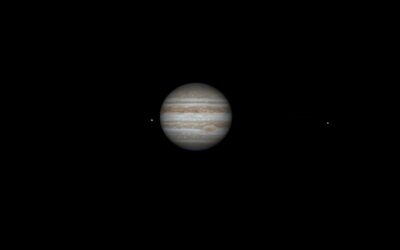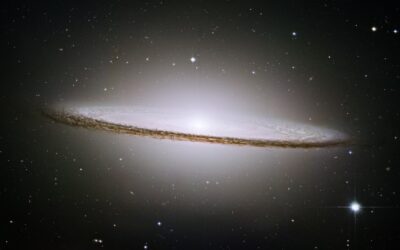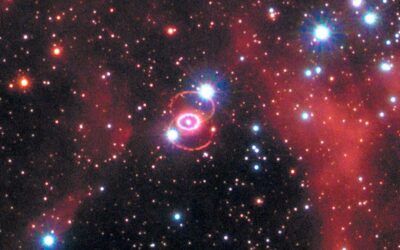ARTICLE ARCHIVES

The World’s Most Amazing Camera: Part 1
Advancements in digital photography over the last several decades are truly amazing. Cameras of high quality and resolution now come standard in most smartphones. But there is an extremely versatile and innovative camera that is far superior to anything else on the market. This amazing device can capture both still images and video with unprecedented clarity and unrivaled color-depth. It has the capacity to automatically adjust its focus from infinity down to an inch in less than one second. This camera has a night-vision (greyscale) mode capable of detecting light from galaxies over two million lightyears away. But it can also be used during the day in conditions that are trillions of times brighter. It is highly portable, being less than one inch in size, and weighing only 28 grams.
Irreducible Complexity
One of the many scientific lines of evidence against neo-Darwinian evolution involves the concept of irreducible complexity. Microbes, plants, fungi, animals, and human beings all have bodies that are composed of extremely complex microscopic machinery. The different parts of a biological cell are interdependent. Hence, neo-Darwinian evolution is incompatible with irreducible complexity.
Evolution: not a Theory
Carl Sagan once said, “Evolution is a fact, not a theory.” And he was partly right; evolution is not a theory. He’s not right about evolution being a fact of course…. This is the idea that all life on earth is descended from a common microbial ancestor: that the information in our DNA is entirely the result of mutations over time that happened to convey survival advantage. It is this version of evolution that is neither a fact nor a theory.
More Tall Tales from Phil: Part 6
In our final segment on this topic, we continue to debunk some of the claims made about biblical creation. This is in response to a recent podcast by Phil Vischer with co-hosts Skye Jethani, Christian Taylor, and Jason Rugg. We have seen that Phil misrepresented both the history of the Church’s position on biblical creation, and also the teaching of modern biblical creationists.
More Tall Tales from Phil: Part 5
We have been examining the errors in history and theology being promoted by Phil Vischer. In his podcast on this issue, he was joined by Skye Jethani, Christian Taylor, and Jason Rugg. We will continue to examine their claims here.
More Tall Tales from Phil: Part 4
We continue to explore the comments made by Phil Vischer and his friends, Skye Jethani, Christian Taylor, and Jason Rugg, on their recent podcast. Recall that Phil had claimed that the young earth creation taught by Ken Ham is a surprisingly young movement that had sprung from the visions of Ellen G. White in the mid-1800s. We have seen that this is wrong. In reality, young earth creation had been the consistent position of the church until the last few centuries.
More Tall Tales from Phil: Part 3
We have been reviewing a recent podcast by VeggieTales creator Phil Vischer, and his co-hosts. Recall, Phil had made a number of false claims about Ken Ham and the history of biblical creation. We will continue our analysis of his claims here. The comments of Phil and other co-hosts are in purple text, with my response in black.
More Tall Tales from Phil: Part 2
We here examine some additional comments by Phil Vischer and co-hosts Skye Jethani, Christian Taylor, and Jason Rugg in their podcast in which they attempt to defend deep time and also attempt to frame the literal/historical interpretation of Genesis as a recent aberration.
More Tall Tales from Phil: Part 1
In the previous article, we addressed some false claims made by VeggieTales creator Phil Vischer. Phil had tried to present the idea of young earth creation as a very recent idea started by the Seventh Day Adventists. This of course is historical...
False History of Creationism is Full of Beans
Our critic this week is Phil Vischer who is the creator of Veggie Tales. Phil apparently does not accept the history recorded in Genesis, and seems unaware of the science that confirms creation and the biblical timescale. He recently made some remarks on twitter that are demonstrably false. Here are Phil’s comments in purple text, with my response in black:
Distant Starlight in a Young Universe: Rømer, Maxwell, and Occam
We may freely stipulate the speed of light in any one direction to be anything between ½c and infinity, and the return-trip speed is set by the constraint that the average speed of light must always be exactly c in vacuum (186,282.397 miles per second). We here explore additional objections to the conventionality thesis. These have all been refuted in the technical literature within the past century. But few people have access to such literature, and so a review is expedient.
Distant Starlight in a Young Universe: Objections to the Conventionality Thesis
We will here investigate common objections to the conventionality thesis[1] – the principle that the one-way speed of light cannot be measured but is instead stipulated.
Distant Starlight in a Young Universe: Concepts of Simultaneity
We previously introduced this distant starlight issue and then examined potential solutions and their difficulties. We now move toward a solution to the issue. This solution is surprisingly straightforward, but will require some discussion of the nature of space and time as we now understand them. To that end, we will here investigate the concept of simultaneity and how this concept has developed over time.
Creation and Politics
What does our view of origins have to do with politics? Everything! A person’s view on origins will guide his or her thinking on how society should function. Our understanding of our beginnings will inform our view of politics because it will determine our understanding of the nature of man, the nature of the universe, the existence of God, our moral responsibility, economics, and the purpose and scope of government in society.
Distant Starlight in a Young Universe: Attempted Solutions
In this article we will continue to explore additional proposed solutions to distant starlight. Creation astronomers and physicists do not currently have a consensus position on the solution to this perceived problem. Some creationists are bothered by this fact, but it is the nature of science that we don’t know everything and therefore we make hypotheses to be tested. Furthermore, science advances only when multiple models are presented and then systematically eliminated on the basis of observations until only the most probable model remains. In this spirit, I will here present some of the positions held by creation scientists, along with the strengths and weaknesses of such proposals.








